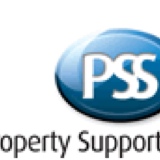Information
-
Site
-
Client
-
Conducted on
-
Prepared by
-
Location
-
Personnel
Hard Floors including Lift Cars - Daily
-
NOTE: In the context of this schedule, hard floors include terrazzo, linoleum, PVC and thermoplastic, marble, lime stone tile etc. All hard floors are to be maintained in accordance with manufacturers instructions.
-
Swept or mop swept floors to be free of all dust and litter. No build up of dust and soilage at edges, under furniture or in corners to be permitted.
-
Damp or wet mopped floors to be free of all scuffmarks and soilage adhering to floor.
-
Biannual - Buffed or spray cleaned floors to have an even sheen, free of scuffs and to be of good general appearance.
-
Biannual - Powdered polish or polish which has deteriorated such that an acceptable standard of appearance can no longer be maintained to be stripped or scrubbed, as necessary, and one or two coats of polish applied as appropriate. Polish to be removed using an approved stripping agent.
Carpets - Daily
-
Vacuumed carpets to be free of surface litter and debris. No build up of dust, fluff or similar soilage to be permitted at edges, under furniture or in corners.
-
All stains to be removed as they arise by spotting.
-
No static charge shall be allowed to build up on any carpet.
-
Biannually - Deep clean of all carpets in accordance with the manufacturers instructions.
-
Biannually - Deep clean walkways on a quarterly basis in accordance with the manufacturers instructions.
Stairs - Daily
-
Stairs and intermediate landing to be maintained so as to be free of dust, debris, tarter ears, smears, fluff and any other soilage. Particular attention to be given to edges, corners, strings and risers to ensure no accumulation or build up of soilage occurs.
-
Banister rails and balustrades, including side panels, to be free of dust after dusting.
-
Spot cleaning and damp wiping to remove all stains, marks, streaks, finger marks or other soilage.
Lifts - Daily
-
Runners to be kept free of accumulation of grit, debris and other materials interfering with the operation of the lift doors.
-
Control panels and surfaces to be cleaned and polished so as to be free of finger marks, smears, streaks and any other soilage.
Walls, Doors Partitions etc. - Daily
-
All surfaces to be free of dust and smears after dusting.
-
All finger marks, smears, stain and general soilage to be removed during cleaning by spot cleaning, damp wiping or washing as appropriate, to leave surfaces clean, dry and smear free.
-
No smears, streaks or build up of soilage, particularly on the skirting and door kick plates to be permitted.
-
Walls to be free of dust and smears after dusting.
Fire Appliances, Ledges Etc. - Daily
-
To be free of dust, smears, streaks and stains after cleaning.
-
Dust to be suction cleaned from voids between secondary glazing and windows.
External Windows, Frames And Cladding - Quarterly
-
After cleaning, both the inside and outside of external windows windowpanes to be free of all marks, streaks and smears.
-
All streaks and runs to be removed from surrounds as they occur
-
Cladding to be free of dirt & grime
Entrance/Reception Area Glass Doors - Daily
-
After cleaning, both sides of entrance and reception area glass to be free of all marks, streaks and smears.
-
All streaks and runs to be removed from surrounds as they occur.
Main & Side Entrances - Walls & Paintwork - Daily
-
The area in front and to the sides of all entrances will be maintained free from debris, litter, spills etc.
Periodic Special Cleans
-
Periodic cleans are defined as those specific tasks that will be time defined in their completion. That time definition will be weekly, bi-weekly, calendar monthly, bi-monthly, quarterly, six monthly and annually.
Authorisation signatures
-
Auditor signature
-
Select date






